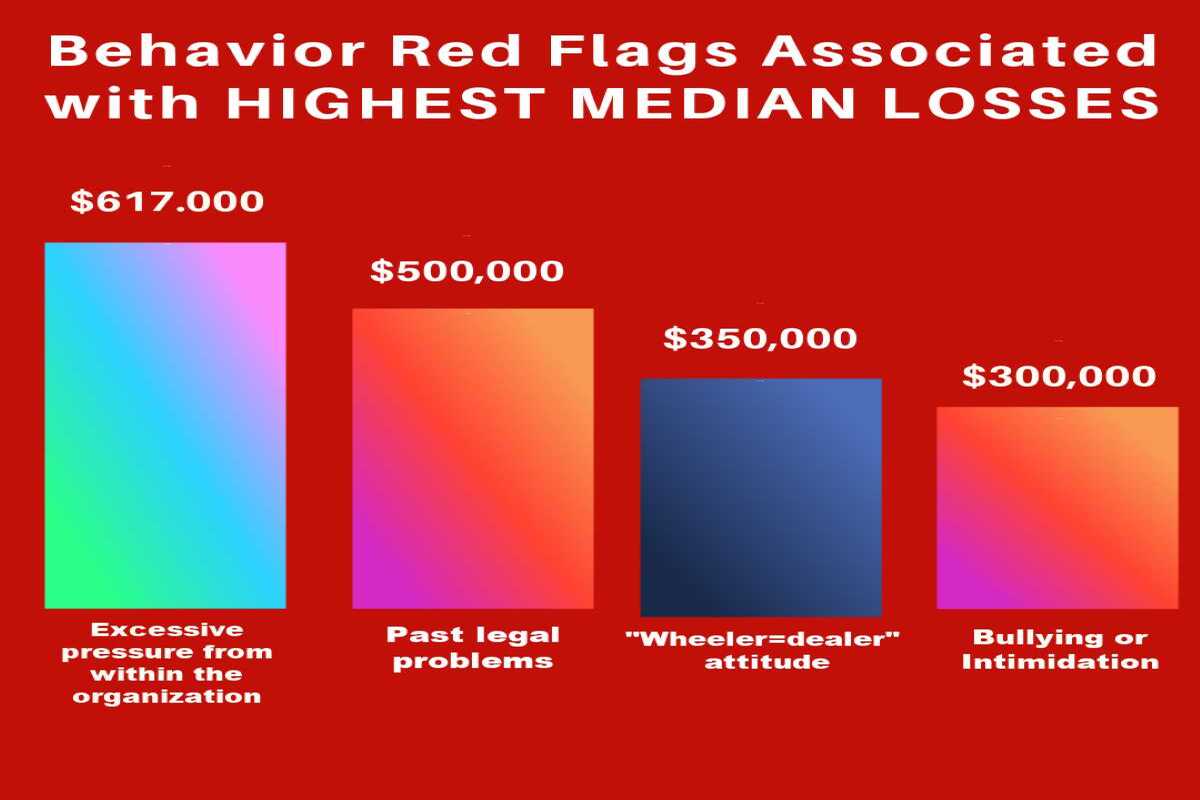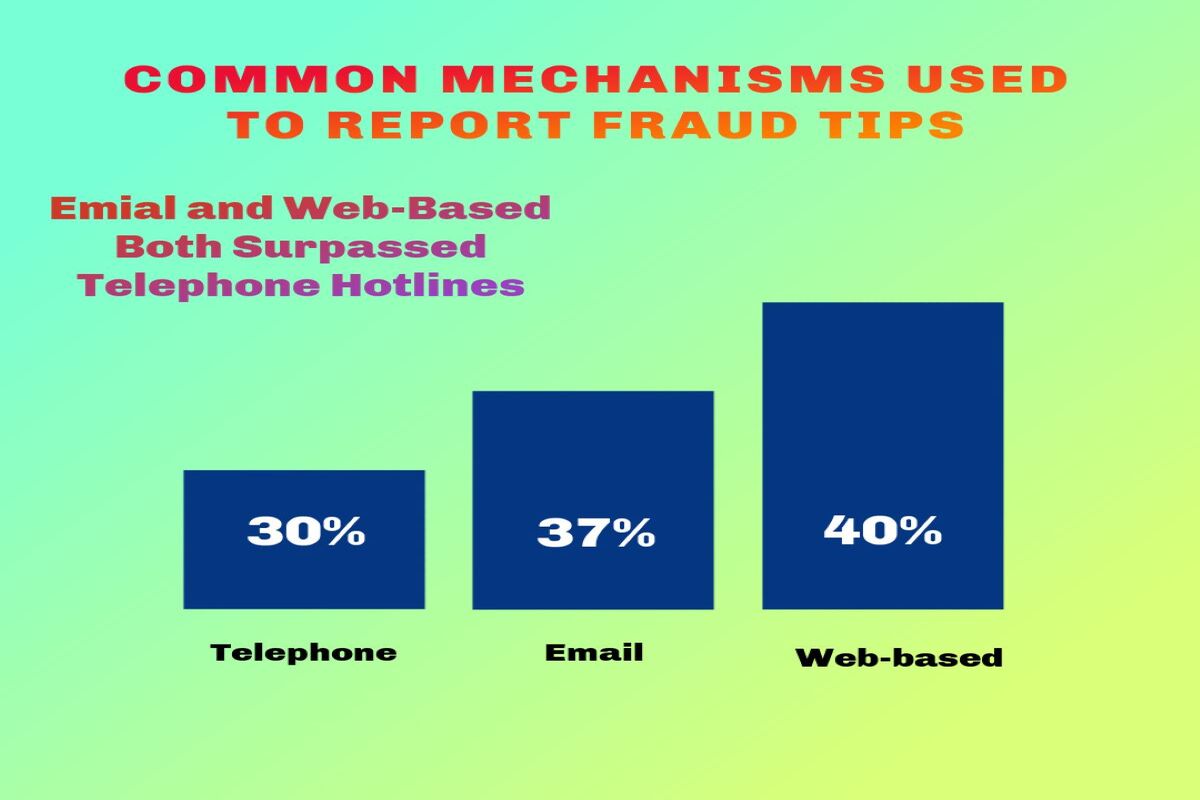Introduction to the Marex Group Class Action Lawsuit
- Marex Group Class Action Lawsuit: The Marex Group class action lawsuit – captioned Katz v. Marex Group plc, No. 25-cv-08368 (S.D.N.Y.) – seeks to represent purchasers or acquirers and/or short sellers of Marex Group plc (NASDAQ: MRX) securities between May 16, 2024 and August 5, 2025, inclusive (the “Class Period”). the Marex Group class action lawsuit charges Marex Group and certain of Marex Group’s top executives with violations of the Securities Exchange Act of 1934.
- Basis: The Marex Group class action lawsuit focuses on protecting shareholder interests through robust examination of corporate governance practices and internal controls. The legal process ensures thorough investigation of alleged misleading statements while maintaining strong oversight of company operations. Shareholders affected by potential securities violations have the right to seek recovery through this class action mechanism, which promotes transparency and accountability in corporate conduct.
- Eligibility to Participate in the Marex Group Class Action Lawsuit: If you purchased or acquired shares of MoonLake stock between March 10, 2024 and September 29, 2025 (Class Period) and suffered financial losses due to alleged misleading statements and inadequate internal controls, you are likely eligible to participate as a class member in the Marex Group class action lawsuit. For a comprehensive evaluation of your legal rights and the lead plaintiff process at no cost, contact Timothy L. Miles at 855-846-6529 or [email protected]
Understanding Securities Fraud Class Action Lawsuits such as the Marex Group Class Action Lawsuit
Securities fraud class action lawsuits serve as crucial mechanisms for maintaining market integrity and protecting shareholder interests. These legal proceedings fulfill several essential functions:
- Hold companies and their executives accountable for potential violations of securities laws and breaches of corporate governance standards
- Provide meaningful financial compensation to investors who may have suffered losses due to alleged fraudulent activities
- Strengthen internal controls and corporate governance practices across the market through deterrence
- Address systemic issues related to financial disclosure and transparency
Common triggers for securities litigation such as the Marex Group Class Action Lawsuit include:
- Insider trading violations that undermine market fairness
- False or misleading financial statements that distort company performance
- Material omissions in corporate communications that affect investor decision-making
- Inadequate internal controls leading to misrepresentation of financial position
The power of the class action mechanism
The class action framework provides several distinct advantages in securities litigation:
- Enables individual shareholders to pursue legal remedies collectively, overcoming resource limitations
- Creates economies of scale in litigation, making it economically viable to pursue claims
- Ensures consistent legal outcomes across all affected investors
- Strengthens negotiating position with defendant companies
- Promotes efficient resolution of complex securities disputes
Navigating the legal complexities in the Marex Group Class Action Lawsuit
Securities litigation involves intricate legal challenges that require careful navigation:
- Meeting stringent pleading requirements under the Private Securities Litigation Reform Act
- Establishing loss causation and damages with precision
- Surviving motions to dismiss through compelling evidence and legal arguments
- Managing complex discovery processes and expert testimony
- Understanding the interplay between securities laws and corporate governance requirements
PRE- AND POST-PSLRA STANDARDS FOR SECURITIES FRAUD LITIGATION
Feature | Pre-PSLRA Standard | Post-PSLRA Standard |
| Motion to dismiss | Based on “notice pleading” (Federal Rule of Civil Procedure 8(a)), making it easier for plaintiffs to survive motions to dismiss. This often led to settlements to avoid costly litigation. | Requires satisfying PSLRA’s heightened pleading standards and the “plausibility” standard from Twombly and Iqbal. Failure to plead with particularity on any element can result in dismissal. |
| Pleading | “Notice pleading” was generally sufficient, though fraud claims under Federal Rule of Civil Procedure 9(b) required particularity for the circumstances of fraud, but intent could be alleged generally. | Each misleading statement must be stated with particularity, explaining why it was misleading. Facts supporting beliefs in claims based on “information and belief” must also be stated with particularity. |
| Scienter | Pleaded broadly; the “motive and opportunity” test was often sufficient to infer intent. | Requires alleging facts creating a “strong inference” of fraudulent intent, which must be at least as compelling as any opposing inference of non-fraudulent intent, as clarified in Tellabs, Inc. v. Makor Issues & Rights, Ltd.. |
| Loss causation | Not a significant pleading hurdle, often assumed if a plaintiff bought at an inflated price. | Requires pleading facts showing the fraud caused the economic loss, often by linking a corrective disclosure to a stock price drop. Dura Pharmaceuticals, Inc. v. Broudo affirmed this. |
| Discovery | Could proceed while a motion to dismiss was pending. | Automatically stayed during a motion to dismiss. |
| Safe harbor for forward-looking statements | No statutory protection. | Protects certain forward-looking statements if accompanied by “meaningful cautionary statements”. |
| Lead plaintiff selection | Often the first investor to file. | Court selects based on a “rebuttable presumption” that the investor with the largest financial interest is the most adequate. |
| Liability standard | For non-knowing violations, liability was joint and several. | For non-knowing violations, liability is proportionate; joint and several liability applies only if a jury finds knowing violation. |
| Mandatory sanctions | Available under Federal Rule of Civil Procedure 11, but judges were often reluctant to impose them. | Requires judges to review for abusive conduct |
Common Types of Securities Fraud
Common Financial Statement Fraud Schemes
| Scheme Type | Description | Example |
| Fictitious Revenue | Recording non-existent sales through false documentation and phantom customers | Creating counterfeit sales contracts or engaging in fraudulent bill-and-hold arrangements that lack economic substance |
| Premature Revenue Recognition | Recognizing revenue before satisfying essential accounting criteria | Accelerating revenue recognition before completing contracted service obligations or product delivery requirements |
| Channel Stuffing | Forcing excessive inventory into distribution channels to artificially inflate sales | Providing unusual incentives to distributors to accept unnecessary inventory levels that exceed reasonable demand |
| Asset Overstatement | Deliberately inflating reported asset values through accounting manipulation | Recording phantom inventory or applying inadequate depreciation to overstate asset carrying values |
| Liability Concealment | Hiding financial obligations through improper accounting treatments | Deliberately understating debt levels or warranty obligations through accounting manipulation |
| Material Omissions | Withholding critical information required for informed investment decisions | Failing to disclose significant related party transactions or contingent liabilities |
| Journal Entry Manipulation | Falsifying accounting records through improper manual adjustments | Making unsupported last-minute entries near reporting deadlines to manipulate results |
Misrepresentation of Financial Information: Companies may deliberately provide false or misleading financial statements to artificially inflate stock prices, often through:
- Revenue recognition manipulation
- Expense underreporting
- Asset value inflation
- Liability concealment
- Cash flow misrepresentation
Omissions of Material Facts: Securities fraud frequently involves failing to disclose critical information that reasonable investors would consider important in making investment decisions. This includes:
- Known regulatory challenges
- Significant operational problems
- Material weaknesses in internal controls
- Pending litigation or investigations
- Adverse business developments
Insider Trading: Corporate executives may engage in unauthorized trading based on material non-public information, violating fundamental principles of market fairness and corporate governance. This can involve:
- Trading ahead of significant announcements
- Tipping off others about non-public information
- Manipulating disclosure timing for personal gain
- Exploiting knowledge of internal control weaknesses
Consequences of Securities Fraud – Marex Group Class Action Lawsuit
The repercussions of securities fraud extend far beyond immediate financial losses, impacting:
- Shareholder value through significant stock price declines
- Market confidence in corporate governance systems
- Company reputation and stakeholder trust
- Regulatory compliance costs and penalties
- Exposure to securities litigation
Companies found engaging in fraudulent practices often face:
- Substantial monetary penalties
- Costly regulatory investigations
- Expensive securities litigation
- Mandatory corporate governance reforms
- Enhanced oversight requirements
THE SECURITIES LITIGATION PROCESS
| Filing the Complaint | A lead plaintiff files a lawsuit on behalf of similarly affected shareholders, detailing the allegations against the company. |
| Motion to Dismiss | Defendants typically file a motion to dismiss, arguing that the complaint lacks sufficient claims. |
| Discovery | If the motion to dismiss is denied, both parties gather evidence, documents, emails, and witness testimonies. This phase can be extensive. |
| Motion for Class Certification | Plaintiffs request that the court to certify the lawsuit as a class action. The court assesses factors like the number of plaintiffs, commonality of claims, typicality of claims, and the adequacy of the proposed class representation. |
| Summary Judgment and Trial | Once the class is certified, the parties may file motions for summary judgment. If the case is not settled, it proceeds to trial, which is rare for securities class actions. |
| Settlement Negotiations and Approval | Most cases are resolved through settlements, negotiated between the parties, often with the help of a mediator. The court must review and grant preliminary approval to ensure the settlement is fair, adequate, and reasonable. |
| Class Notice | If the court grants preliminary approval, notice of the settlement is sent to all class members, often by mail, informing them about the terms and how to file a claim. |
| Final Approval Hearing | The court conducts a final hearing to review any objections and grant final approval of the settlement. |
| Claims Administration and Distribution | A court-appointed claims administrator manages the process of sending notices, processing claims from eligible class members, and distributing the settlement funds. The distribution is typically on a pro-rata basis based on recognized losses. |
The Role of Regulatory Bodies
Regulatory authorities, particularly the Securities and Exchange Commission (SEC), play a vital role in:
- Investigating potential securities fraud
- Enforcing securities laws and regulations
- Monitoring corporate governance practices
- Assessing internal control adequacy
- Protecting investor interests
The SEC maintains broad investigative powers and can impose significant penalties, including:
- Monetary fines
- Trading suspensions
- Officer and director bars
- Mandatory corporate reforms
- Ongoing compliance monitoring
Importance of Compliance
Maintaining robust compliance programs proves essential for:
- Preventing securities fraud
- Strengthening internal controls
- Enhancing corporate governance
- Reducing litigation risk
- Protecting shareholder interests
Companies must prioritize:
- Accurate financial reporting
- Timely material disclosures
- Effective internal controls
- Strong corporate governance
- Regular compliance training
Detailed Summary Table Outlining the Economic, Operational,
And Legal Frameworks for Securities Class Actions
| Category | Key Elements | Practical Implications | Recent Developments | |
| Economic | ||||
| Corporate Financial Impact | • Legal fees and defense costs • Settlement payments • Penalties and fines • Remediation expenses | • Direct reduction in profitability • Potential stock price decline • Impact on shareholder value • Financial statement disclosures | • Average settlement amounts increased 15% in 2023 • Defense costs typically range from $2-8M per case | |
| Operational Disruption | • Management distraction • Document production burden • Internal investigation requirements • Testimony preparation | • Reduced focus on core business • Resource reallocation • Strategic initiative delays • Compliance program overhauls | • Companies now spend average of 1,200+ hours on litigation response • 68% of executives report significant operational impact | |
| Investor Recovery Mechanism | • Class action procedures • Out-of-pocket damages • Lead plaintiff selection • Claims administration | • Financial loss compensation • Transaction-based calculations • Pro-rata distribution • Claims filing requirements | • Recovery rates average 2-3% of investor losses • Institutional investors recover higher percentages | |
| Market Confidence Effects | • Transparency enhancement • Accountability mechanisms • Governance improvements • Disclosure quality | • Investor trust restoration • Market participation incentives • Capital formation support • Information reliability | • Post-litigation governance reforms implemented in 72% of settled cases • Measurable improvements in disclosure quality | |
| Current Trends | ||||
| Individual Accountability Focus | • Officer and director liability • Personal financial consequences • Clawback provisions • D&O insurance implications | • Executive behavior modification • Personal risk assessment • Compliance prioritization • Leadership accountability | • 64% increase in named individual defendants • Personal contributions to settlements up 28% | |
| Technology-Enhanced Detection | • AI-powered surveillance • Advanced analytics • Pattern recognition • Anomaly detection | • Increased violation detection • Stronger evidence collection • More sophisticated cases • Higher success rates | • SEC using machine learning to identify disclosure anomalies • 42% of new cases involve technology-detected violations | |
| Litigation Process Modernization | • E-discovery platforms • Digital evidence management • Virtual proceedings • Automated document review | • Faster case processing • Cost efficiency improvements • Enhanced evidence organization • Remote participation | • 87% reduction in document review time • 35% decrease in litigation costs through technology | |
| Cross-Border Complexity | • Jurisdictional challenges • Regulatory differences • Enforcement coordination • International evidence gathering | • Multi-jurisdiction compliance • Global risk assessment • Harmonized defense strategies • International settlement considerations | • 38% of securities cases now involve cross-border elements • International regulatory cooperation agreements expanded | |
| Legal Frameworks | ||||
| Pleading Standards | • PSLRA requirements • Scienter (intent) showing • Particularity in allegations • Strong inference threshold | • Higher dismissal rates • Front-loaded case investment • Detailed complaint preparation • Expert involvement earlier | • Macquarie Infrastructure Corp. v. Moab Partners (2024) reshaped omission standards • Motion to dismiss success rate at 47% | |
| Loss Causation Elements | • Corrective disclosure • Price impact evidence • Economic analysis • Event studies | • Causal chain demonstration • Market efficiency proof • Expert testimony requirements • Damages limitation | • Dura Pharmaceuticals v. Broudo remains controlling precedent • Increasing sophistication in economic analyses | |
| Damages Calculation | • Out-of-pocket methodology • Inflation per share • 90-day lookback period • Transaction-based approach | • Expert-driven calculations • Trading pattern importance • Holding period considerations • Proportional recovery | • Forensic accounting techniques increasingly sophisticated • Competing damages models in 92% of cases | |
| Class Certification | • Commonality requirements • Typicality standards • Adequacy of representation • Predominance of common issues | • Class definition strategies • Lead plaintiff selection • Institutional investor preference • Certification challenges | • Institutional investors serve as lead plaintiffs in 58% of cases • Class certification contested in 94% of cases | |
| Investor Considerations | ||||
| Participation Decision Factors | • Loss threshold assessment • Lead plaintiff potential • Litigation timeline • Cost-benefit analysis | • Active vs. passive participation • Resource commitment evaluation • Recovery expectations • Reputational considerations | • Minimum loss threshold for lead plaintiff typically $100K+ • Average case duration now 3.2 years | |
| Recovery Optimization | • Claims filing procedures • Documentation requirements • Deadline adherence • Distribution mechanics | • Proof of transaction needs • Claims administrator interaction • Recovery maximization strategies • Tax implications | • Only 35% of eligible investors file claims • Electronic claim filing now standard | |
| Governance Implications | • Board oversight duties • Disclosure controls • Risk management systems • Compliance programs | • Director liability concerns • Committee responsibilities • Reporting procedures • Documentation practices | • Board-level disclosure committees now present in 78% of public companies • Director education programs expanded | |
| Future Participation Rights | • Opt-out considerations • Individual action potential • Settlement objection rights • Appeal possibilities | • Strategic participation choices • Large loss alternative approaches • Settlement evaluation • Ongoing case monitoring | • Opt-out actions by large investors increased 47% • Settlement objections successful in only 3% of cases |
Protecting Your Investments
Investors must remain vigilant in safeguarding their investments through:
- Regular portfolio monitoring
- Due diligence reviews
- Corporate governance assessment
- Internal control evaluation
- Securities litigation awareness
Effective protection strategies include:
- Analyzing financial statements
- Monitoring corporate disclosures
- Evaluating management credibility
- Assessing governance structures
- Understanding legal remedies
Strategies for Investor Protection
Here are comprehensive strategies investors should consider to protect their interests and navigate potential securities fraud:
Conduct Thorough Due Diligence
Before making any investment decisions, shareholders must conduct extensive research focusing on:
- Comprehensive analysis of the company’s financial statements, paying special attention to revenue recognition practices and internal controls
- Detailed evaluation of management’s track record in maintaining strong corporate governance
- Assessment of the company’s regulatory compliance history and any past securities litigation
- Review of analyst reports and independent research highlighting potential red flags
- Examination of the company’s corporate governance structure, including board independence and audit committee effectiveness
Warning signs that warrant further investigation include:
- Frequent changes in executive leadership or board composition
- History of regulatory violations or securities litigation
- Weak or ineffective internal controls
- Inconsistent financial reporting patterns
- Unusual related-party transactions
Pay particular attention to:
- Changes in accounting policies or practices
- Modifications to internal controls
- Corporate governance updates
- Management’s discussion of operational challenges
- Disclosure of material risks or uncertainties
Implement Portfolio Diversification Strategies
Effective diversification remains crucial for risk management:
- Spread investments across multiple sectors and industries
- Balance holdings between growth and value stocks
- Consider geographic diversification
- Maintain appropriate position sizes
- Regular portfolio rebalancing
Key diversification principles include:
- Avoiding over-concentration in single companies
- Understanding sector-specific risks
- Monitoring correlation between holdings
- Maintaining liquidity reserves
- Regular risk assessment and rebalancing
Monitor Company Communications and Disclosures
Maintaining vigilant oversight of company communications proves essential:
- Carefully review all SEC filings, particularly Forms 10-K, 10-Q, and 8-K
- Analyze earnings calls transcripts and management presentations
- Track company press releases and public statements
- Monitor regulatory investigations or enforcement actions
- Follow securities litigation developments affecting the company
The Lead Plaintiff Process in the Marex Group Class Action Lawsuit
- Investors who have experienced financial losses due to the alleged fraudulent activities and corporate governance failures have the opportunity to seek appointment as lead plaintiff in this significant securities litigation. This process represents a crucial mechanism for protecting shareholder interests and ensuring proper representation in complex securities cases.
- Under the PSLRA, any investor who purchased Marex Group common stock during the specified class period maintains the right to petition the court for appointment as lead plaintiff. This legislative framework strengthens internal controls and corporate governance by empowering shareholders to take an active role in securities litigation.
- The appointed lead plaintiff assumes the vital responsibility of representing the collective interests of all class members throughout the litigation process, ensuring that proper corporate governance standards are upheld and that internal controls are strengthened to prevent future violations.
Key lawsuit information:
- Lawsuit: Marex Group class action lawsuit
- Case Caption: Katz v. Marex Group plc, No. 25-cv-08368 (S.D.N.Y.)
- Eligibility: All short sellers of Marex Group plc (NASDAQ: MRX) securities between August 14, 2024 and August 5, 2025, inclusive (the “Class Period”)
- Class Period: August 14, 2024 to August 5, 2025
- Summary of Allegations: The Marex Group class action lawsuit alleges that the company and its executives violated the Securities Exchange Act of 1934 by making false and/or misleading statements and/or failing to disclose material facts to investors.
- Court: Southern District of New York
- Lead Plaintiff Deadline: December 8, 2025.
Criteria for Lead Plaintiff
- Prospective lead plaintiffs must demonstrate the largest financial interest in the outcome of the securities litigation while also establishing their typicality and adequacy as class representatives. This requirement ensures that the lead plaintiff has sufficient motivation to actively oversee the litigation and protect class interests.
- It’s essential for shareholders to understand that their ability to recover damages through this securities litigation is not contingent upon serving as lead plaintiff. The lead plaintiff process primarily focuses on ensuring effective representation and strong corporate governance oversight.
Filing Deadlines
- Shareholders interested in participating in the Marex Group class action lawsuit must act decisively, as the deadline for filing lead plaintiff motions is set for December 8, 2025. This timeline reflects the urgency of addressing potential corporate governance failures and strengthening internal controls.
- Affected investors should prioritize gathering comprehensive documentation of their transactions and consulting with experienced securities litigation counsel to ensure their rights are properly protected and preserved throughout the legal process.
The Benefits of Serving as a Lead Plaintiff in the Marex Group Lawsuit
- Influencing litigation strategy: Lead plaintiffs play a crucial role in shaping key strategic decisions throughout the securities litigation process, including whether to pursue settlement negotiations or proceed to trial. This position allows shareholders to actively participate in addressing corporate governance concerns and strengthening internal controls.
- Negotiating more competitive fees: Lead plaintiffs can leverage their position to negotiate more favorable attorney fees and reduce overall litigation costs, ultimately maximizing the potential recovery for all class members affected by alleged corporate governance failures.
- Active participation in the case: Lead plaintiffs maintain the right to review critical court filings, monitor case progress, and engage in detailed strategy discussions with legal counsel, ensuring thorough oversight of the securities litigation process.
- Leading settlement discussions: The lead plaintiff’s involvement extends to participation in mediation sessions and settlement negotiations, requiring their approval before any proposed settlement can be presented to the court for consideration. This responsibility helps ensure that any resolution adequately addresses corporate governance reforms and strengthens internal controls to prevent future violations.
- Through this comprehensive lead plaintiff process, the Marex Group class action lawsuit demonstrates how securities litigation serves as a vital mechanism for enforcing corporate governance standards and maintaining robust internal controls in public companies. The process empowers shareholders to take an active role in protecting their investments while promoting transparency and accountability in corporate management practices.
- No financial risk: Participating in Marex Group class action lawsuit as a lead plaintiff typically involves minimal financial exposure for shareholders. Lead counsel in these cases operates on a contingency fee basis, advancing all litigation costs and expenses throughout the proceedings. This arrangement means attorneys only receive compensation if they successfully secure a settlement or favorable judgment. Even then, both legal fees and expense reimbursements are paid from the settlement fund rather than the lead plaintiff’s personal assets, ensuring robust protection of shareholder interests while maintaining strong corporate governance standards.
The Lead Plaintiff Deadline in the Marex Group Class Action Lawsuit
- Lead plaintiff motions for the Marex Group class action lawsuit must be filed with the court no later than December 8, 2025.
- This securities litigation represents a critical opportunity for investors who suffered losses to seek recovery.
- When a securities class action is filed, it initiates a structured legal process designed to protect shareholder interests and maintain market integrity through robust corporate governance enforcement.
The Eligibility Criteria for Lead Plaintiff Appointment for the Marex Group Class Action lawsuit
- The investor must have suffered substantial financial losses directly related to their transactions in Marex Group securities during the specified Class Period
- The investor must have conducted their transactions in full compliance with applicable securities regulations and exchange requirements
- The investor must demonstrate the capability and commitment to actively represent the interests of the entire class throughout the duration of the litigation
- The investor must have no conflicts of interest that could impair their ability to serve as lead plaintiff
- The investor must be willing to participate in discovery and potential testimony if required
- The investor must have maintained detailed records of their transactions and losses
- The investor must be prepared to certify their claims under penalty of perjury
It is crucial to note that both domestic and international investors who meet these criteria are eligible to seek appointment as the lead plaintiff in the class action lawsuit, as courts have consistently recognized the rights of non-U.S. investors in securities class actions. This inclusive approach ensures comprehensive representation of all affected shareholders.
The Settlement Process in a Securities Class Action Lawsuit
Phase | Description |
| Mediation/Negotiation | Before a settlement is finalized, the plaintiff’s attorneys and the defendants’ legal teams typically engage in extensive negotiations, often with a neutral, third-party mediator, to agree on the terms of a potential settlement. |
| Preliminary court approval | After a settlement is reached, the parties must submit the agreement to the court for preliminary approval. The court will review the fairness of the terms before moving forward. |
| Notice to class members | If the court grants preliminary approval, a court-approved notice is sent to all potential class members. This notice outlines the settlement details, including eligibility and the allocation plan for damages. |
| Claims administration | A court-appointed claims administrator manages the settlement fund. Eligible investors must submit a claim form with documentation to receive their portion of the settlement. |
| Final court approval | After claims are processed and notice requirements are met, the court holds a final hearing to approve the settlement. The court ensures it is fair and reasonable for the entire class. |
| Distribution of funds | Once final approval is granted, the claims administrator distributes the settlement funds to eligible claimants on a pro-rata basis, based on their recognized losses. The process can sometimes involve multiple rounds of payouts. |
| Case termination | The lawsuit is officially terminated after the settlement funds have been fully distributed |
What is the Securities Act of 1934?
The Securities Act of 1934 represents foundational legislation enacted to regulate securities markets and protect investors from fraudulent practices. This Act established crucial requirements for corporate governance, internal controls, and transparent financial reporting.
Overall, the Securities Act of 1934 serves as a cornerstone for maintaining market integrity and investor protection through mandatory disclosures, robust internal controls requirements, and enforcement mechanisms that enable securities litigation when violations occur.
In a securities class action, such as the Marex Group class action lawsuit, shareholders unite to seek recovery of losses allegedly caused by corporate misconduct, particularly regarding deficient internal controls and misleading disclosures. This litigation mechanism promotes corporate accountability while providing an efficient means for investors to pursue claims that might be impractical to litigate individually.
How Are Damages Calculated in the Marex Group class action lawsuit?
In securities fraud cases like the Marex Group class action lawsuit, damages are typically calculated based on out-of-pocket losses that investors sustain due to misleading statements or material omissions regarding internal controls and corporate governance practices. These calculations require detailed analysis of stock price movements and trading patterns during the Class Period to determine the financial impact of alleged violations.
Investor Options in the Marex Group class action lawsuit
- Marex Group Class Action Lawsuit: Investors affected by the Marex Group class action lawsuit possess specific legal rights under securities litigation frameworks. Understanding these rights is vital for shareholders considering participation in the lawsuit, as they provide crucial protections and potential avenues for recovery. The strength of internal controls and corporate governance practices often becomes a central focus in such securities litigation.
- Marex Group Class Action Lawsuit: Investors who experienced losses related to the Marex Group class action lawsuit have several strategic options available. Each option carries distinct implications regarding potential recovery, involvement in the litigation process, and ability to influence corporate governance reforms. Careful evaluation of these options helps shareholders make informed decisions about protecting their interests.
FREQUENTLY ASKED QUESTIONS ABOUT THE MAREX GROUP CLASS ACTION LAWSUIT
What initiated the Marex Group class action lawsuit?
The Marex Group class action lawsuit originated from investor allegations regarding misleading statements and material omissions about the company’s financial condition, operational performance, and effectiveness of internal controls. The complaint asserts that these misrepresentations resulted in artificial inflation of the stock price, leading to significant shareholder losses when the truth emerged through corrective disclosures.
How can I join the Marex Group class action lawsuit?
Investors who purchased shares during the specified Class Period and suffered losses automatically become class members without taking immediate action. However, those considering pursuing lead plaintiff status must carefully evaluate their eligibility and commitment to representing class interests throughout the Marex Group class action litigation. This role involves active participation in overseeing the case and ensuring robust corporate governance reforms.
What are the potential benefits of a Marex Group class action lawsuit?
Securities class actions provide individual investors a powerful mechanism to collectively pursue recovery while promoting enhanced corporate governance and stronger internal controls. These lawsuits like the Marex Group class action litigation often result in both monetary compensation and important corporate reforms that benefit all shareholders. The litigation process helps ensure accountability and transparency in financial markets.
How long will the Marex Group class action lawsuit take to resolve?
The duration of Marex Group class action lawsuit can vary significantly based on multiple factors, including:
- Complexity of alleged violations regarding internal controls and corporate governance
- Volume of discovery materials and financial records requiring analysis
- Number of expert witnesses needed to evaluate damages and causation
- Settlement negotiations and potential mediation proceedings
- Court schedules and procedural requirements
- Implementation timeframes for any corporate governance reforms
Contact Timothy L. Miles Today About a Marex Group Class Action Lawsuit
If you suffered substantial losses and wish to serve as lead plaintiff of the Marex Group class action lawsuit, or just have general questions about you rights as a shareholder, please contact attorney Timothy L. Miles of the Law Offices of Timothy L. Miles, at no cost, by calling 855/846-6529 or via e-mail at [email protected]. (24/7/365).
Timothy L. Miles, Esq.
Law Offices of Timothy L. Miles
Tapestry at Brentwood Town Center
300 Centerview Dr. #247
Mailbox #1091
Brentwood,TN 37027
Phone: (855) Tim-MLaw (855-846-6529)
Email: [email protected]
Website: www.classactionlawyertn.com
Facebook Linkedin Pinterest youtube
Visit Our Extensive Investor Hub: Learning for Informed Investors









